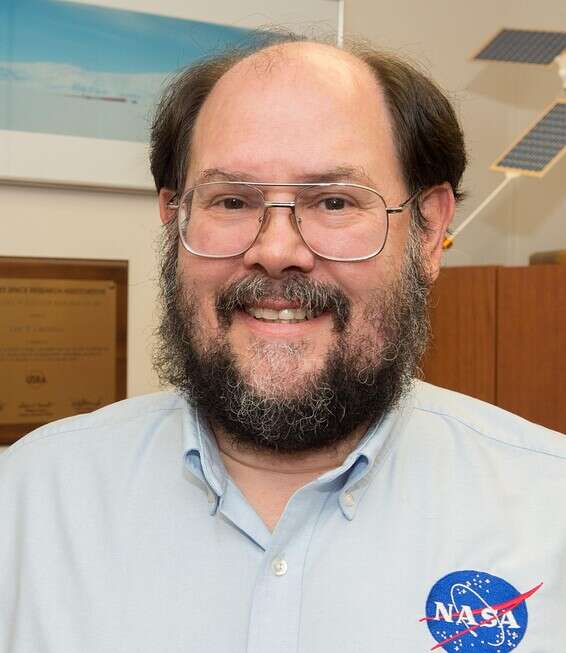So says in an interview with "Israel Today" Eric Christian, a NASA senior scientist and part of Parker's team - the spacecraft sent to the sun • Exclusive
The Parker Spacecraft on the Sun (imaging) // Illustrative photo: NASA / Johns Hopkins APL / Steve Gribben
Spacecraft are constantly sent to the moon, but what about the sun? In 2017, NASA decided to investigate the huge star that provides us with light and heat, and to send it the "Parker" spacecraft, named after Dr. Eugene Parker, the astrophysicist who conceived the theoretical idea of the existence of solar winds. This is the first time that NASA has dedicated research tools to humans in their lifetime (see also below).
A few weeks ago, Parker dispatched the first data from her trip. The first report of the probe showed some amazing discoveries. It not only provided the public with amazing photographs of the red-hot surface, it showed that the sun releases rapidly moving particles of energy and was first observed.
When the spacecraft reaches the closest distance to the sun in the next few years, about 6.5 million kilometers - it will further explore the aura of the Sun (Corona) and help predict future space events that may affect astronauts in space. Parker is trying to explain and return three unique phenomena of our sun: How it heats up, how the changing magnetic fields affect the solar winds, and how the particles of energy move across the sun.
In an exclusive interview with "Israel Today", the Deputy Chief Investigator and Head of the Energy Particulate Laboratory at NASA's Eric Christian Space Flight Center tells us about the project. Christian was among those responsible for creating the research tools installed on Parker (and called ISIS acronyms). ).
Dr. Eric Christian, Goddard Space Center, NASA // Photo: NASA
A storm on the sun
"There are some puzzling aspects of what we saw, some of which are still incomprehensible, and in quite a bit of this project we were completely surprised by the data we received," says NASA Scientist today.
The study with Parker's first data, published evidence of the existence of storms over the sun. One startling discovery is the proof that some magnetism in the sun is experiencing an exchange phenomenon, in which the magnetic force of the solar winds changes.
This may also explain how the outer atmosphere of the sun is heated - it often reaches high temperatures of millions of degrees. Scientists claim that the sun, when it looks so far away, looks relatively stable. However, they explain, Parker proved the opposite. The sun, in fact, is not stable at all if you look at it closely.
"The exchanges are magnetic fields that fold on themselves," Christian explains. "You don't expect a magnetic field to rotate around itself like that," he says.
Parker’s initial flare-up recorded another phenomenon of “flare-ups”: sudden flashes around the sun, most often seen as parts of solar plasma emitted from the aura into space.
Solar eruption over the sun, as photographed by WISPR (processing) // Photo: NASA / Naval Research Laboratory / Parker Solar Probe
In addition, NASA scientists have seen how much solar energy particles are spinning. "Something is happening to them," Christian explained. "When they get out of the sun, it pretty much explains why the solar wind is moving at an accelerating rate, and why, for example, the aura of the sun is warmer than the surface of the sun." The corona, he explained, swirls as the sun turns. To us on Earth, it almost seems as if the corona is moving away from the sun.
This phenomenon can shed light, quite literally, on the evolution of all the stars in the universe: they rotate very quickly as they are born, and slowly their orbits slow down. In contrast, our sun, is "middle-aged" of suns, and very quiet, Christian points out. If scientists can find other stars similar to our Sun, with similar planetary systems, it may be one way to find life in other planets.
The road to Mars is shorter
Parker, the sun research spacecraft, is scheduled to reach the nearest distance in 2024 to which man-made tools have reached the sun, but the road there has been, and still is, long.
The idea for the project began around 1959. But then NASA still had the capabilities to develop heat shields that could protect research tools in close proximity to the sun. The heat shield, a major part of the spacecraft used to isolate it from the deadly heat of the sun - has not yet been developed.
It was not until 2003, that the plans were removed from the drawers, and began to crust, but did not begin to materialize until about six years later. The project took about ten years, especially to create the isolated carbon sole that allows the spacecraft not to become a high-temperature molten scrap. Parker's main research tool is WISPR (Wide-field Imager for Solar PRobe), which is used for photography and as Parker's "eyes".
The WISPR camera was designed to look at the corona, which is almost impossible to see with the naked eye except during a solar eclipse. During the 2017 solar eclipse, Christian noted, scientists took the opportunity to explore the corona and their theory of the remains of energy particles. So far, the Corona, the solar wind, shocks and various other materials emitted from the sun have been photographed. "It's best to take pictures of the sun when objects look dim and dazzling," Christian tells us.
To get closer to the sun, Parker will do something similar to "Genesis" on her way to the moon, but instead of Earth, Parker will use a Venus star: it will orbit around Venus in flight and out of it with increasing rotational motion, and so it will orbit around the sun.
"In that sense, it's actually easier to get to Mars than to get to the sun," Christian said. The sun is currently at a solar minimum - a period of very low solar activity, but in five years, Parker’s intended arrival time, it will be much more active. And Parker will have a lot to see and explore. "It's an exciting task," Christian concludes. "We do science. In practice."
Dr. Eugene Parker watches the launch of the spacecraft named after him // Photo: NASA / Glenn Benson









